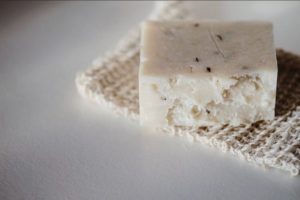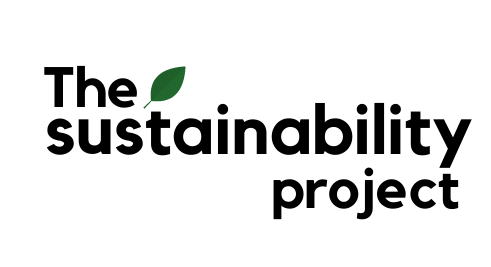When you hear about going zero waste, the bathroom would probably be the last place you turn to. However, it is also one of the places in your home that produces the most waste.
Plastic and other non-biodegradable products are often used to make containers for shower essentials like bottles, tubes, containers, and even toothbrushes and toothpaste.
To date, more and more zero-waste and sustainable alternatives are emerging in the market. With that, I have incorporated some alternative products into my bathroom routine, and because of this milestone, I am encouraged to share my experience and journey while living sustainably.
This is by no means to brag about my success but to inspire others to embark this journey too! While this is not an easy decision, I would encourage everyone to take baby steps and do your best!
With that, here are some sustainable tips and steps that I have incorporated in my bathroom routine without compromising hygiene and cleanliness, which you can try too!
Transitioning to Bar Soap 
Liquid soaps come with disposable plastic bottles or containers. These disposables end up in the landfill or incinerators. If not properly disposed of, they can end up as marine debris, which can be mistaken as food and ultimately threaten marine life.
This is why I decided that the first change I should bring into my life is to switch over from liquid body wash contained in plastic bottles to bar soaps.
Other than its packaging, liquid soap is also found to have 25% more carbon footprint than bar soaps. They require more energy to produce, and even more energy to package.
It is also said that bar soaps last longer as we use 7 times more liquid soap on average. If you use it daily, bar soaps can last for as long as 4 months. Other than that, they use lesser water and they get the job done as well as any of the liquid soaps out there.
Additionally, do remember to place your bar soaps in a cool, dry and open-air environment when not in use. This is to prevent your soap from melting!
While bar soaps are not completely package-free, they are more sustainable alternatives to liquid soaps contained in disposable plastic bottles.
Alternatively, if your preferred brands of soaps do not come in bars, you can reduce waste by reusing your plastic bottles and opting for refills! You don’t have to worry about the price either, as refills tend to be priced slightly lower than contained soaps.
Shampoo Bars 
Shampoo bars were a surprising discovery for me as I’ve always believed shampoos only exist as liquids. I was reluctant to try them at first due to my extremely greasy hair. However, I decided to give it a try and I was glad that shampoo bars generally, are in fact so much more efficient and effective than regular shampoo for me.
To use them, you can either rub the shampoo onto your wet hair or lather it between your hands before applying on your hair. Similarly, after applying the shampoo, you can apply conditioner as well.
For all bar soaps, do remember to air dry it in a cool and dry environment to prolong its use!
If you have greasy hair like me, I would highly recommend you try charcoal mint shampoo bars as they provide detoxifying properties, unclog pores and promotes hair growth!
A Low-Waste Dental Routine
Bamboo Toothbrushes 
Next on my agenda – plastic toothbrush to bamboo toothbrush. While both toothbrushes essentially work the same, the handle of the bamboo toothbrush can decompose within 6 months. On average, a bamboo toothbrush can last you for 3 months. However, it is also safe to use it until the bristles wear out.
The bristles are often made up of nylon which is not biodegradable. So, do remember to use a pair of tweezers and pluck out the bristles before you throw them in the recycling bin!
Also, they tend to be priced slightly higher than a conventional toothbrush, which is a concern to me. However, you will be as pleasantly surprised as me to find many local shops which made the change so much more affordable and convenient.
Also, remember that adopting zero-waste lifestyle is an investment. Buy only what you need, practice conscious consumption and use the product for as long as it can provide you. By doing so, you can also save costs!
From Toothpaste to Toothpowder 
Did you know that billions of toothpaste tubes are sent to landfills every year?
Beyond the unrecyclable plastic tube comes with another environmental impact. While ingredients in toothpaste are effective in maintaining oral health, these ingredients contain chemicals that are harmful to the environment.
They go down the sink, into the drain and into water bodies, causing water pollution in the long run. Toothpaste is again something that we have been conditioned to since childhood, and switching them out was a skeptical move at first, until I was introduced to tooth-powder.
They are made with three essential and natural ingredients that work the same as conventional toothpaste; bentonite clay, baking soda and peppermint oil.
Bentonite clay helps in polishing your teeth while detoxifying harmful bacteria to keep your breath and gums clean. Baking soda helps fight cavity and plaque formation and peppermint essential oil freshens your breath.
To use, simply scoop a teaspoon of toothpowder onto a sauce dish and dip your damp toothbrush onto it before brushing! While they will not foam as much as conventional toothpaste, they provide the same function. It can also last you for 4-5 months.
Sustainable Menstrual Cups 
Finally, the last and hardest shift of all – disposable sanitary napkins to menstrual cups.
This was the biggest leap of change and thing I was most unprepared for. A small, flexible cup made of silicone or latex rubber, they are often perceived as unsafe, unclean and inconvenient.
However, our body fluids do not stick easily to the silicone or latex rubber, making it easy to clean. Each menstrual cup can actually last up to 12 hours and be reused for up to 10 years. Can you imagine the number of disposable pads we saved?
Read More: Menstrual Cups – Your New Best Friend
Also, it takes time to master the art of using it. In fact, it took me 6 months to practice until perfect. Hence, if you are considering to make the switch to menstrual cups or reusable menstrual pads, take the leap of faith and don’t give up!
Going zero waste is a journey that takes both time and dedication. Step by step, incorporate environmentally-conscious habits into your lifestyle slowly. Before we purchase something, look beyond the product label.
Take a step further and see the hidden environmental costs that come with the products. I must say that having taken one year to make these switches to my bathroom routine, it is a journey of self-discovery where I’ve explored more product options. Hence, never give up hope!
Author Bio:
Tvarita Shivakumar works as the Operations & Analytics Coordinator at Muuse, a company that aims to reduce disposable waste in the F&B industry by providing a platform where reusable cups and food boxes can be rented for takeaway and delivery. She have always been passionate about sustainability and enthusiastic about public advocacy for a better plan and that is how her passion project of @Ecoclub_global started. It started as a small Instagram page where she share my daily little green actions but now it spans over Instagram, Facebook and Twitter talking deeply about both individual, community and systematic change.


Thanks for sharing some zero waste bathroom routines. I have tried all of the aforementioned tips and have also tried using reusable cotton pads for makeup removal, application of toner and serums after my bath too. 🙂
Skip the tub and take a (brief) shower instead. Brush your teeth and shave in the shower to further economize on water.